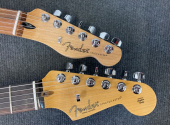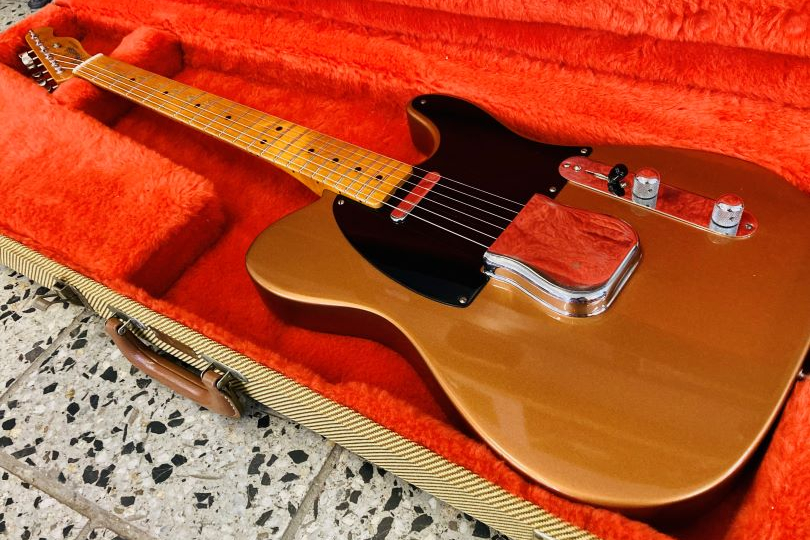
Under the Hood #1: Details That Put the Telecaster Ahead of Its Time
In this new series, we look at the historical development and technical possibilities of iconic electric guitar designs. We start with one of the most famous models: Fender Telecaster, the first mass-produced electric guitar. Because of its simplicity and genius, this guitar is very easy to repair and modify. The various modifications have many advantages and shortcomings. However, you can modify a Telecaster practically endlessly and, with a little skill and experience, you can do some modifications yourself. Let's take a look at how the Telecaster legend was born—and how and what you can improve on it.
Before the Telecaster name was born, Leo Fender had come a long way, through years of innovation, ideas and failures. Fender was an enterprising and incredibly hard-working man. He went from fixing radios to developing electric guitars.

Leo Fender's vision
What is interesting is his approach to the guitar, as it is different from that of other developers—Leo Fender himself couldn't play guitar. This made it possible for him to look at the guitar from the perspective of a developer and repairman. He surrounded himself with capable people, and most importantly, in the development process, he made sure that the guitar was as adapted as it could be to the needs of guitarists and the modern age. He looked for new ways of construction and sound and was not afraid to think outside the box.
Another important idea concerned the repair of broken guitars. Leo was aware that not many guitarists own more than one guitar. He was also aware that, in terms of construction, it is not easy to repair guitars after a fall, for example. Broken necks that are glued to the body are not as easy to repair as they first appear. It takes a lot of experience, precision, and quality tools—and all of that costs money. So what has Fender come up with to change the guitar world for the better? With the design of the guitar we know today as the Telecaster.
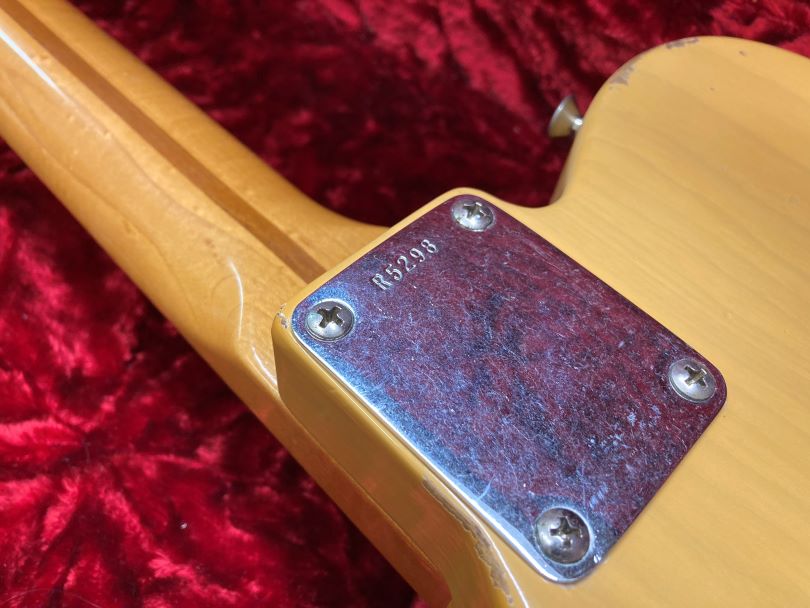
Advantages of the Telecaster design
The Telecaster is a guitar composed of dozens of different parts that are easily manually replaceable and interchangeable. This is one of its strengths and competitive advantages that Leo Fender has capitalized on. Because he looked at the development of the guitar from the perspective of the repairman and the market, i.e. guitarists, the world got to see a guitar that could be quickly, easily and cheaply made and repaired.
If a fall were to damage the neck of the guitar, there were now two options: repair the neck or replace it. The second option was unprecedented. The Telecaster's neck was bolted to the body with four long screws, which could be unscrewed to remove the neck. Installation of a new or repaired neck to the body was equally straightforward. The neck is inserted into the body pocket, screwed in, and that's it. Done. So the owner didn't have to wait very long for their damaged guitar to be repaired. With the neck replaced, the guitar was good as new again. If the body of the guitar is damaged, the procedure is basically the same—the body can be replaced with a new one and that's all there is to it.
Of course, Leo Fender also thought about electronics, which he had already been innovating and repairing in his days as a radio repairman. He now put that experience to good use—and so, whenever there's a problem with a Telecaster's electronics, it's childsplay to unscrew the cover and start fixing it. Potentiometers, female jack, pickup switch, connecting wires and pickups—all are in plain sight and easily accessible after unscrewing a few screws.
So, to sum up the design side of the Telecaster: Leo Fender used his skills and experience as a repairman and developer to invent an affordable, convenient, and easily repairable electric guitar that was about to change the guitar world in 1950 (still under a different name then).
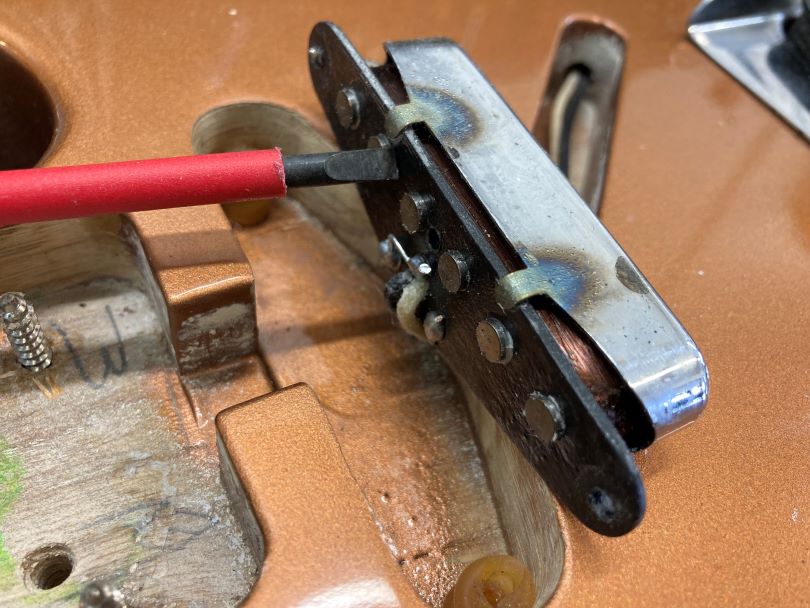
Electronics a pickups
Leo Fender was aware of the considerable potential of electric guitar pickups. He was also aware of their shortcomings, so he tried to invent the electronics and construction of the guitar so that everything would work and be fully usable during concerts.
When developing the pickups, feedback proved to be a problem with the first electric guitars. Most electric guitars up to that point had been made with hollow bodies. Leo Fender designed a guitar with a full body. Another detail that Fender needed to solve was the volume. The guitarist needed to be heard when playing. But at high volume, there were problems with noise and feedback or poor sound quality.
The combination of a full body (the first models were made of pine and later ones either of alder or ash) and sophisticated electronics that played with details (metal neck pickup covers, so-called ashtrays over the bridge pickups, or different ways of connecting the pickups) brought the intended success.
The pickups were not rigidly positioned; the guitarist could change their distance from the strings as needed. A simple screwdriver was all it took. The closer the pickup is to the strings, the louder the output, but at the same time subtle sonic details can be lost. A pickup set further away from the strings, on the other hand, produces a softer sound with more specific details, but at the same time the volume and bass are reduced. This gives guitarists a huge range of sonic possibilities.

Failure of the neck design in the first models—and its solution
Early in the development of the Telecaster, Fender encountered its first major design setback, but it was subsequently resolved effectively. The first models lacked neck bracing. Although the neck itself was constructed correctly and showed no defects, after tuning, when the string tension changes enormously (it reaches up to several tens of kilograms, moreover, during normal tuning the strings have a different tension than when tuned down, for example, by one note), the necks without the missing bracing bent and became unplayable. Approximately fifty of these guitars were shipped to the first customers, but it didn't take long before they started to be returned to Fender.
Fender had to react quickly and come up with a solution, because guitars without a reinforced neck had no chance of success. So a steel adjustable brace was installed in the neck. This serves both as a structural element to prevent the neck from warping and deforming due to string tension, and is also used to precisely adjust the deflection of the entire neck to better reflect the needs of the individual guitarist. A different setting suits everyone. The fact that everyone could fine tune their guitar to their own requirements made these guitars even more desirable. And Leo Fender has earned a reputation as a guitar builder who also cares about the feel and playability of his instruments. Incidentally, the fifty defective pieces without neck bracing later became very valuable to collectors.
But Fender also changed the material used for guitar necks. Typically, harder woods like ebony or rosewood were used for the fingerboards. Fender went with maple. This was also a departure from the old ways. He wasn't afraid to look for new solutions.
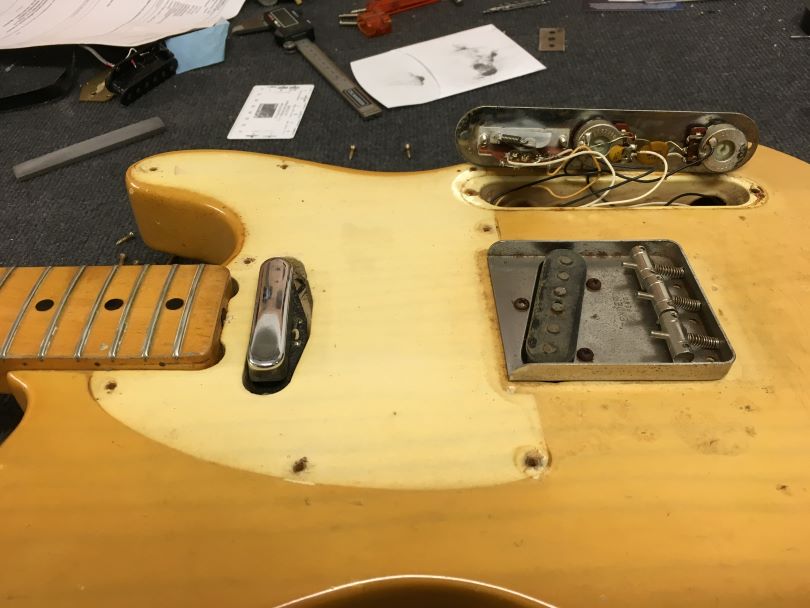
Bridge, action, and octaves
Another detail that allowed the guitar to be set up more sensitively and precisely was the fingerboard and bridge saddles. The strings are routed through them from the body of the guitar to the zero fret on the neck. Fender came up with a bridge that had three adjustable saddles in all directions. It was possible to adjust both the height of the saddles and their distance from the zero fret. This allowed the guitarist to adjust the string action over the fingerboard to suit their own needs, which was a great complement to the fine adjustment of the neck. The octave tuning was not yet perfect because there were two strings on one saddle. If you want to tune the octaves really accurately, it's ideal for each string to have its own adjustable saddle. This didn't happen with Telecasters until many years later, when guitars started to have six-saddle bridges.
Precise adjustment options for the entire guitar make for an ingenious instrument
The Telecaster could therefore be accurately set up in every conceivable way. The guitarist could choose precise and individual settings for the neck bend, action, octaves, zero fret, and pickups. The result was a guitar that has become the favorite of countless players over the years. Models from the early years have become highly collectible. The price of the 1950s models has been steadily rising, not only because of their high quality and unmistakable sound character, but also because the available pieces are dwindling—most have already been dismantled by collectors.
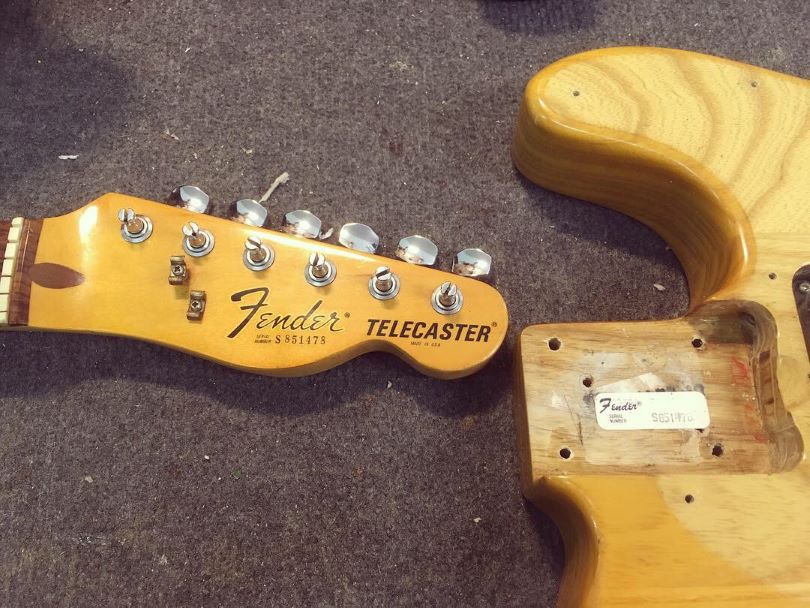
How the name Telecaster was born
Finally, I would like to recount how Telecaster got its name. The first models were called Esquire. They officially came out in June 1950 and had one pickup. A subsequent model with a second pickup added to the neck, introduced by Fender in the second half of that year, was called the Broadcaster.
This became the first mass-produced electric guitar of its kind. However, Leo Fender soon withdrew the Broadcaster name for self-serving reasons—a short time after its introduction, he was approached by Gretsch, which had already patented the Broadkaster name for its drums. Logically, Fender did not want to get into unnecessary disputes with a larger company, so he had the Broadcaster name removed from his guitars altogether. The Fender Broadcaster lasted only from October 1950 to January 1951.
After that, for several months, models came out of the factory with only the Fender logo on the headstock. The name Nocaster was adopted for guitars from this intermediate period. In the summer of 1951, Fender came up with a new name for his guitars. Thanks to his knack for innovation, he was well aware of the power of the increasingly modern television age. So the guitar was named the Fender Telecaster.
To close
The Telecaster became a concept and a legend and influenced the development of electric guitars for several decades. Due to its straightforward design, it is still very popular. It is easy to repair and modify. What modifications have come directly from the Fender factory throughout the instrument's history? And what modifications can you make to your Telecaster yourself? We'll take a look at that in the next episodes of this series.
If you have found an error or typo in the article, please let us know by e-mail info@insounder.org.


